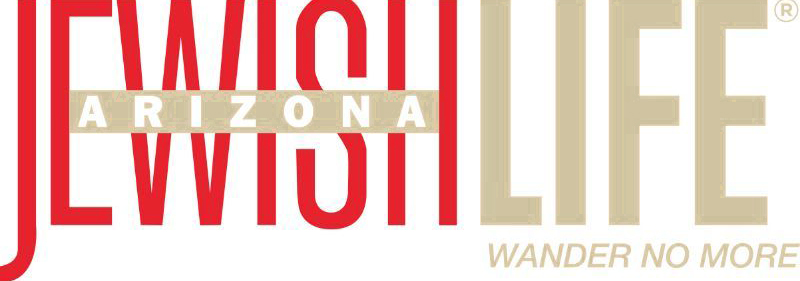Robert Sutz is a man on a mission. He’s one of America’s noted impressionist painters with work widely dis- played in galleries and private collections across the
U.S. and abroad. His studio boasts a bronze bust of Barry Goldwater that he was commissioned to make several decades ago. He was also commissioned to paint the strong, straightforward portrait of Golda Meir, a likeness of which hangs on the wall in his Scottsdale studio.
But his most significant achievement is the “We Remember” Holocaust Memorial that travels the country showcasing his incredible, lifelike masks and pastel portraits of Holocaust survi- vors, liberators and righteous gentiles.
Sutz is a charming, spry octogenarian whose father lost his entire family in the Auschwitz and Treblinka death camps. In dedication to him, Sutz has devoted his time, energy and talent to creating haunting life masks of survivors who sit with him as models and share their history and past with him.
“I don’t do portraits for pleasure anymore,” he explains. “I am 100% devoted to these masks.” He has created more than 100 masks and is actively seeking out more survivors, liberators and righteous gentiles to immortalize in his stunning creations. He also creates video interviews of the survivors and paints vivid depictions of their stories on canvas. “I interview them,” he says. “They tell me what they witnessed. I turn their visions into paintings.”
The paintings are brutal, graphic and staggering. He walks me through his studio, and I am amazed at the prodigious collection of work he’s created. His file cabinets are neatly stuffed with over 4,000 index card sketches he makes to remember the stories he hears. “Seeing the hideous and unbelievable scenes through the eyes of those who were there is what I’m striving to record in my paintings,” he says. Sutz remembers every survivor for whom he has ever created a mask. He points them out to me and tells me their stories as if each were standing there with us, listening, as we wander through his compact but impressive studio.
Sutz was born in Chicago and grew up in the South Shore neighborhood. At 13 he decided he was ready to choose a profession and inspired by his brother, he started making pen and ink sketches. His brother took him to a local park district art class where Sutz tells me, “I smelled the oil paint and fell in love.”
But it is his commitment to creating these life masks that tell the story of who this man really is. Over and over he stresses, “These masks are from life, right from life.” His “We Remember” nonprofit organization uses the masks and other works of art to remind present and future generations that the Holocaust did happen, and that it must never be forgotten.
Sutz has devoted his full time to “We Remember” since 2000. I mention the name of a survivor I recently met and Sutz comes to life. “I want to meet her,” he says. “Can you put us together?” He tells me the money to fund his nonprofit is minimal. He exists nowadays off of donations and in these times, those are underwhelming at best.
But when I ask why he doesn’t supplement the masks with some for-profit portraits, he tells me, “I don’t want to be set off my goal. Time is too precious.”
The process of creating a life mask is arduous, but these masks offer an astounding opportunity to feel the presence of those who have been depicted. They can be a little bit eerie. At one point he shows me a room filled with life masks, and I feel such energy from them that I am uncomfortable when we leave and turn out the lights. It is as if I am shutting them out by darken- ing the room and turning my back on them.
“It takes a maximum of an hour to create the mold,” Sutz explains. He does so by placing nontoxic, nonallergenic plaster bandages on the face of the survivor, whose eyes can be open or shut and who can breathe normally throughout the process.
Once dry, the mold is removed and a plaster positive is cast. Sutz then spends four to six weeks modifying and painting the masks to create the finished product. “It isn’t at all unpleasant,” Sutz tells me about sitting for the molds. “Most people find the mask-making procedure rather interesting.” For those who absolutely can’t sit for the mask, Sutz creates pastel portraits for his traveling shows. When exhibited, each mask and portrait is displayed along with a brief bio and the paintings Sutz created from the survivor’s memories.
Robert Sutz is funny, likable and gifted beyond measure. He is also wholly devoted to recording and remembering a devastat- ing time in our history that we, as a people, must never forget. If you are a Holocaust survivor, liberator or righteous gentile who worked in some way to save people from the devastating Nazi regime, I urge you to contact Sutz at robertsutz.com and arrange a meeting. It costs you nothing to tell your story. But the importance of having your memory immortalized? That is truly priceless.




